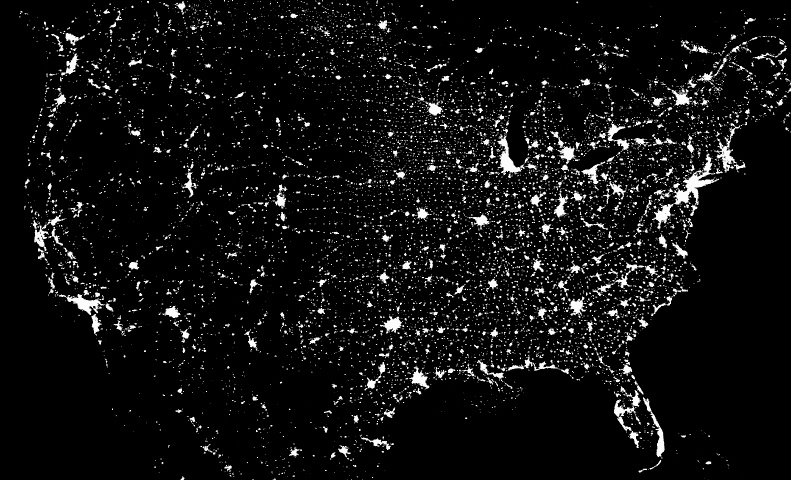


UNIVERSITY OF CALIFORNIA OBSERVATORIES / LICK OBSERVATORY


Astronomers are not only concerned with the total amount of night sky brightness. The types of light sources that produce this brightness are of equal or more importance. If sky brightness comes only from sources that emit light in a narrow range of colors (or wavelengths), then filters can be used to suppress those colors, leaving all others available for astronomical research. Although this will have some deleterious effect on the science produced, it is not devastating. The wider the range of colors in night-sky illumination, the more serious the effect of light pollution on astronomical observation. Moreover, blue light is more detrimental than red light because the atmosphere scatters blue light more readily (this is the reason the daytime sky is blue).
Because different kinds of lamps produce lighting in different color ranges, Lick astronomers are vitally interested in how nearby cities light their streets and parking lots. (For the following discussion of different lamp types, please refer to Figure 1, which shows colors produced by different kinds of lamps. Also shown in Fig. 1 is the color of the night sky as recorded by a spectrograph on the 40-inch Nickel reflector at Mt. Hamilton.) Incandescent, Mercury vapor, and metal halide lamps produce light of many or all colors, and appear very natural, or nearly white. These types of lighting are the most detrimental to astronomy, because they hamper observations in all colors and cannot be filtered out. Low Pressure Sodium (LPS) lamps produce almost all their output in a single color, or narrow range of wavelengths. To the eye, the light is a very pure yellow, because it emits only at that color. Astronomers prefer this lighting because it is easy to filter out. High Pressure Sodium (HPS) lamps appear yellowish with salmon (pink) overtones. Because the wave length range of light emitted by HPS is much broader than LPS, HPS appears more like natural light. Although astronomers much prefer HPS lighting to incandescent, Mercury vapor, or metal halide lighting, it produces significantly more problems for astronomical research than LPS.
What can cities do to reduce light pollution? Some steps are evident and make obvious economic sense: use of only the lighting necessary for the intended purpose, proper shielding of lighting fixtures so light is directed to where it is needed, and the use of timers to turn lighting off when it is not needed. However, even when all these measures are taken, helpful as they are, light pollution from cities can have serious impact on astronomical observation if care is not paid to the type of lighting used. Lick Observatory urges cities in the Santa Clara Valley to use LPS to light its streets and parking lots, both public and private, and to use HPS in areas where color rendering is more critical. We urge that metal halide lighting be used sparingly.


